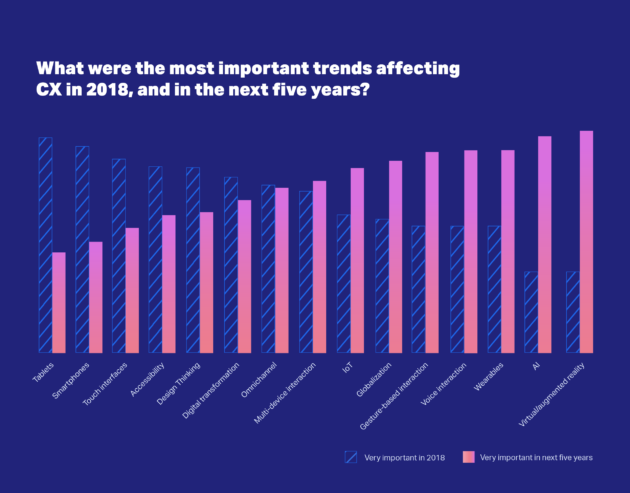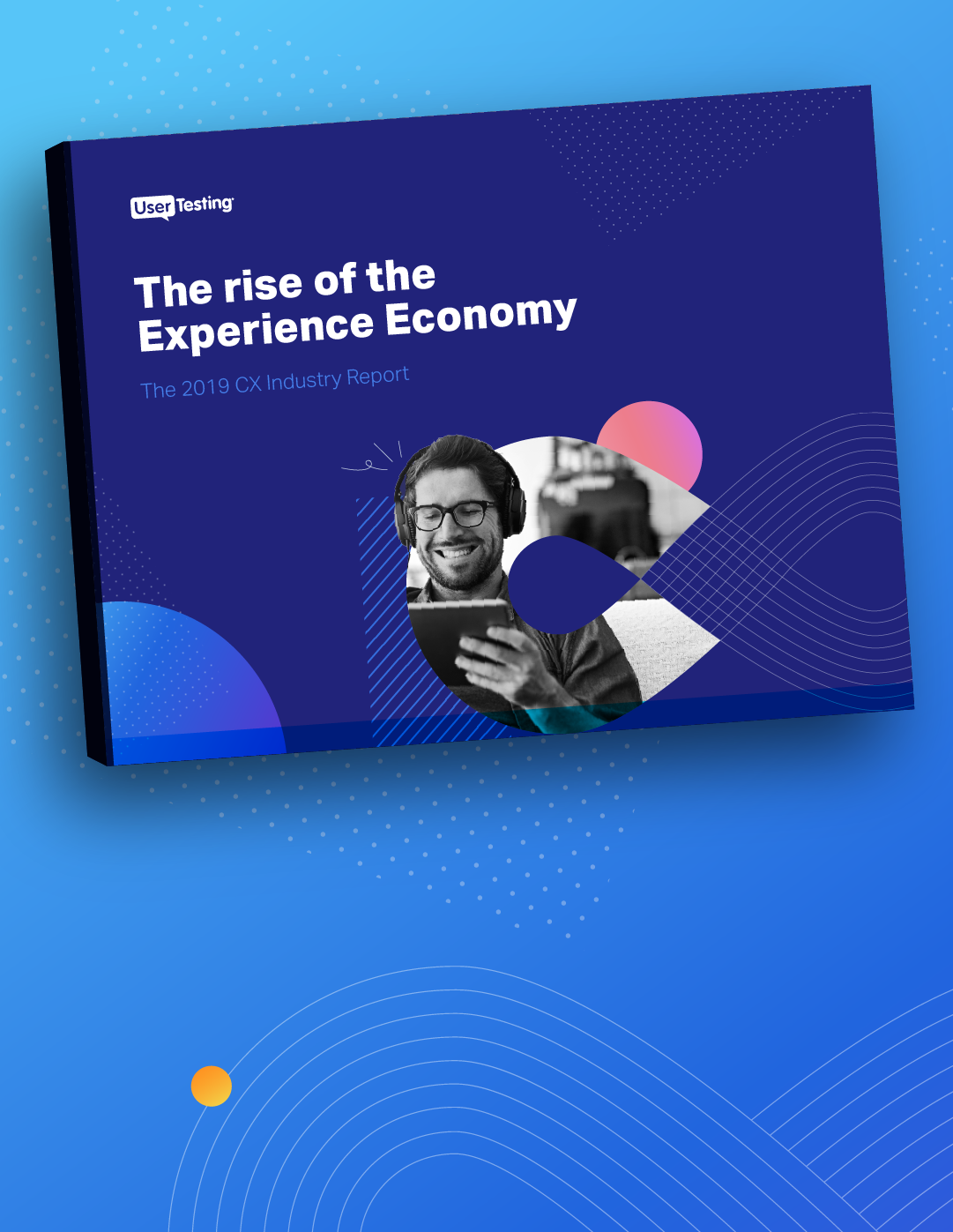
The rise of the Experience Economy: the 2019 CX Industry Report

The lines between the products and services people interact with—whether just a few times in their life or several times per day—and everyday life are rapidly blurring.
Earning the loyalty of customers—and ensuring the profitability of an organization—now depends on a holistic approach that seamlessly connects a brand with its customers at every touchpoint and behind the scenes. This is the Experience Economy.
In UserTesting’s sixth annual CX Industry survey, we asked professionals how their organizations are adapting to meet the ever-changing needs of sophisticated consumers in an increasingly digital landscape.
Three key themes stood out this year:
- Digital Transformations are off to a slow start
- What’s trendy in CX doesn’t necessarily reflect current customer needs
- Scaling customer insight, by enabling everyone in the company to get fast customer feedback, is more important than ever
Keep reading for a sneak peek into one of the key themes, or visit our 2019 CX Industry Report page to download an analysis of the results, register for our in-depth webinar to learn more about the findings, and more.
Beware the hot new trends in CX
Tech trends that excite industry and consumers often differ from what they need in the present. It’s tempting to get wrapped up in emerging technologies, but spend too much time and resources on them and you risk leaving customers feeling abandoned.
Our study reflects this as we explore future trends versus current needs. In past years we asked respondents to rank which trends they thought would have the most impact on CX in the next five years. But this year, for the first time, we also asked which trends were most important in the past year.
The top trends for five years from now were the sexy technologies everyone is talking about today, things like artificial intelligence and virtual reality. However, when we asked which trends matter the most right now, the winners were more mundane technologies that don’t get as much attention in the press: tablets and mobile computing.
The rankings illustrate how important it is to be practical when making customer experience plans. The tech press always pays the most attention to the new: emerging technologies that might drive the new generation of customer experience. If you’re making a five-year strategic plan, it’s great to keep those trends in mind. But when you’re prioritizing today’s work, it’s critical to put most of your focus on the CX technologies that people are actually using today, even if they feel a little old hat.
To put it another way, the sexiest technologies are the ones your customers actually use.

Customers are the most important trend to watch
Every day, consumers are exposed to better, more seamless, and personalized experiences—both digitally and in person. Every great experience raises the bar for the next. To stay relevant to customers, both this year and in the future, companies must keep their fingers on the pulse of consumers’ ever-changing needs and expectations and continue to iterate and optimize their offerings.
No matter what any market research says, the only thing that really matters is what matters to your customers. If you already include human insight as part of your product development lifecycle, then you’re in a great position. You can quickly leverage that insight to make informed decisions about what to build and when—and to stay on top of trends in consumer behavior.
If fast customer feedback for everyone in the company isn’t yet part of your organization’s strategy, now is the time to make it a priority. We won’t go so far as to say that it’s never too late to start, however. The reality is that the future will belong to firms that figure out how to build customer empathy into every CX decision they make, whether it’s in product, marketing, design, or any other function that touches the customer.
Want to learn more?
If you’d like to learn more, visit our 2019 CX Industry Report page, where you can:
- Download the full report with more analysis of the key findings
- Download the detailed survey responses
- Register for our webinar, which will take a deep dive into the survey results
In this Article

Welcome to the Experience Economy
Welcome to the Experience Economy


